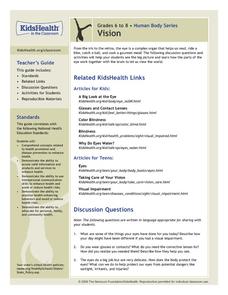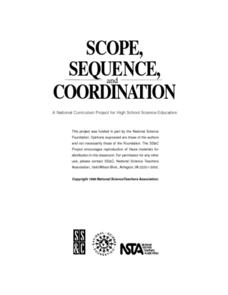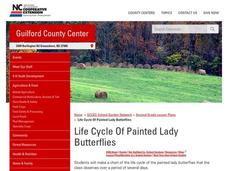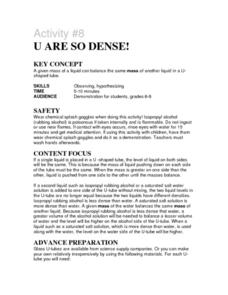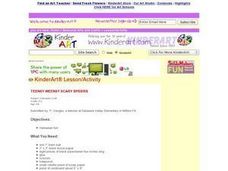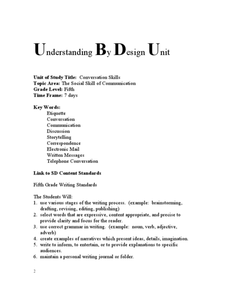Exploratorium
Cardboard Tube Syllabus
Construct paper tubes and then try out a few optical illusion tricks:
See a virtual hole in your own hand
Get a grasp of how the eyes combine images
Notice that one eye is dominant over the other
Reveal how your eyes adjust to...
Exploratorium
Pupil
Give pupils a magnifier, a mirror, and a flashlight so that they can examine their own pupils. As they shine a light on their eyes, the light is shone on how this structure dilates and contracts to control how much is allowed into the...
Curated OER
Biomedical Devices for the Eyes
Students study the structures of the human eye. In this eye device lesson students examine different eye problems and devices that can help to resolve them.
Nemours KidsHealth
Vision
From the iris and retina to glasses and contact lenses, learners will be excited to see what activities are in store for them as they learn about the complex organ of the human eye.
Messenger Education
Snow Goggles and Limiting Sunlight
Why would someone need contact lenses that offer UV protection? With a 28-page packet full of instruction and worksheets, learners discuss solar radiation and its potential harm to eyes. They make snow goggles similar...
Curated OER
Wolf Communications Matching Activity
Students complete several activities to learn about wolves. In this wolf science lesson, students read and complete activities to learn about wolf communication, their life cycle, fun facts, and hunting activities. Students also read...
Curated OER
How We See
Learners study how images they see are transmitted to the brain. In this sight lesson students complete several activities that have to do with visual pathways and field defects.
Curated OER
Exploring a Teaching Career Through an Energy Lesson
After learning how to dentify information on energy and its conservation. your class can work in groups to create an activity and lesson plan for elementary high schoolers, teaching all about energy and its conservation. Students...
Curated OER
Microbes and Health
Young scholars participate in activities that show them how tiny germs are spread. In this germs lesson plan, students engage in hands on lessons to show them how microorganisms can easily spread disease through the mouth and hands.
Curated OER
Animal Behavior
Can you train a worm? Biology buffs will have a blast trying! Using planaria or earthworms, they introduce a certain stimulus repeatedly until the desired response happens more quickly. They also explore the response of their own eyes to...
Curated OER
Variation and Heredity
Junior geneticists tally eye color and height in their lab groups. They examine certain traits in soybean and corn seedlings. For each activity, they gather data and learn about continuous and discontinuous genetic variation. In another...
Curated OER
Qualitative Aspects of Rotational Dynamics
Explanations for six different physics lab activities and five suggested assessments are contained in this resource by the National Science Teachers Association. Any combination can be used to open learners' eyes to rotational motion....
NC Cooperative Extension, Guilford County Center
Life Cycle Of Painted Lady Butterflies
The Very Hungry Caterpillar is the inspiration for this project-based learning activity. Kindergartners create a lifecycle chart for a butterfly with four sections: egg, caterpillar, pupa, and butterfly. It is a three-dimensional...
Curated OER
It can be a hazard!
Every child should know about the dangers of hazardous household materials. They draw a line between the types of material and the best precaution to stay safe when using that material. They can complete a secondary activity which has...
Curated OER
Trout Cookies
Students explore the external anatomy of a fish. In this anatomy and adaptations instructional activity, students look at an image of a trout and identify its various external features including fins, eyes, spots, parr marks and lateral...
Curated OER
How Old is Old
Students explore the aging process. Students examine the concept of age from a child's perspective and discuss that aging is relative. Students read the book, How Old is Old? and engage in several different activities on age and life spans.
Chymist
Tritration: Standardization of a Base and Analysis of Stomach Antacid Tablets
Do antacid tablets really do what they claim? An experimental lesson attempts to answer this question. Individuals practice the process of titration during the first part of the experiment. They then use those skills to neutralize an...
Curated OER
Activity #8 U Are So Dense!
Students watch as the teacher demonstrates: if a single liquid is placed in a U-shaped tube, the level of liquid on both sides are the same. When the mass is greater on one side than the other, liquid is pushed from one side to the...
Curated OER
Teensy Weensy Scary Spiders
Students create "teensy weensy scary spiders" using foam balls, tissue paper, yarn, pipecleaner, scissors and glue in this Halloween art lesson for the early elementary classroom. It is suggested to begin the activity as a science...
Curated OER
Rainforest Introduction
First graders explore world geography by completing a KWL chart. In this rainforest research lesson, 1st graders read a fictional story discussing a boy who lives in the rainforest. Students analyze the story, identify the plot and...
Curated OER
The Social Skill of Communication
Fifth graders explore communication by analyzing manners. In this social skills lesson plan, 5th graders review the different forms of communication and how to present yourself in a phone conversation, face to face meeting, e-mail, etc....
Curated OER
Mystery, Myth, and Wonder: The White Elephant
Students examine the role of the elephant in the culture of Thailand through many different class activities based on a PBS program "The White Elephants of Thailand with Meg Ryan". Students also look at the impact of technology on...
Curated OER
Solution Shapes
Eighth graders examine different solutions. In this solution material instructional activity students complete a lab activity and several worksheets.
Curated OER
Milkweed Monitoring
Ninth graders study milkweed and see how it is effected by ozone. In this air pollution lesson students complete a lab activity that includes data analysis.



